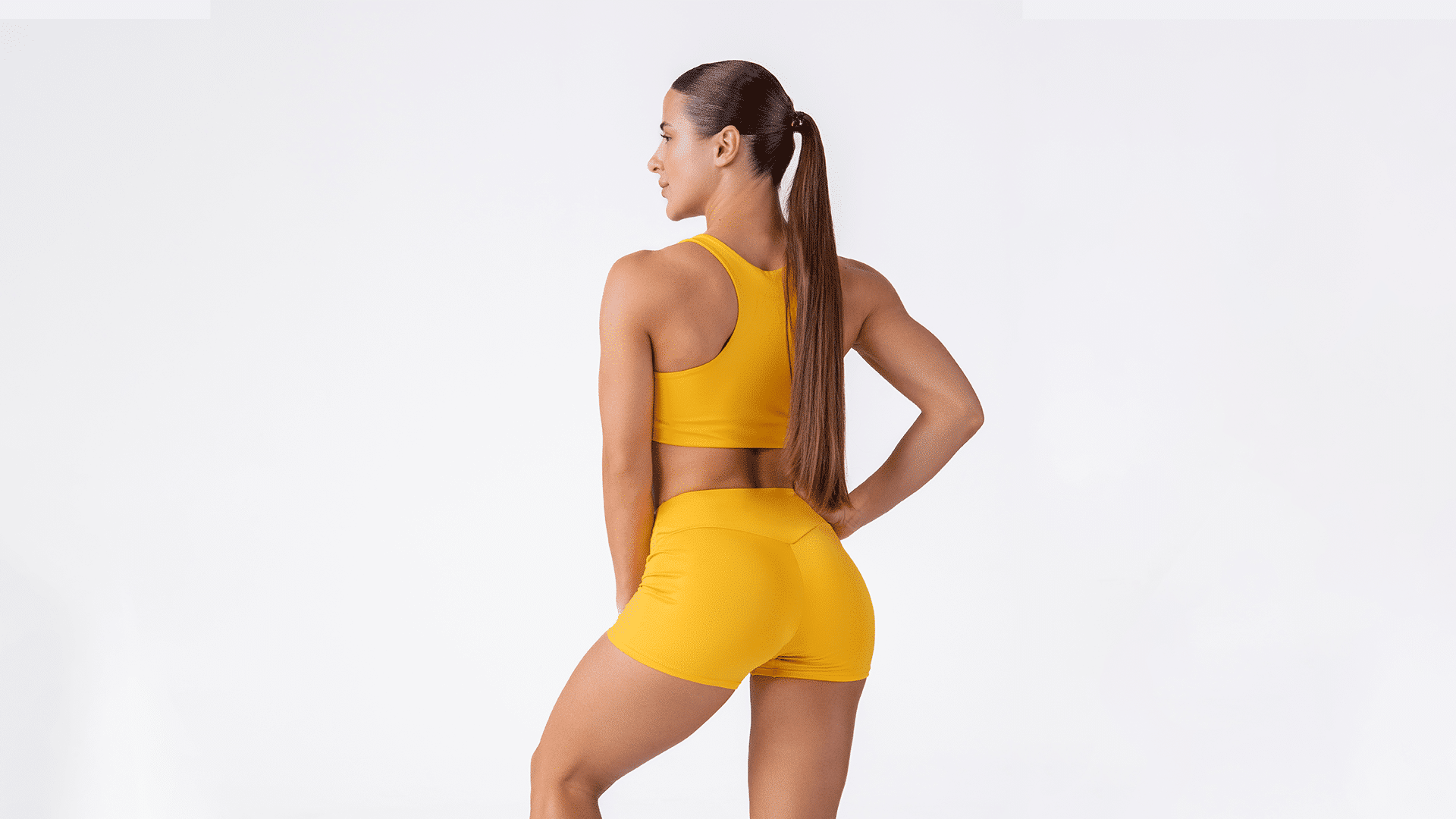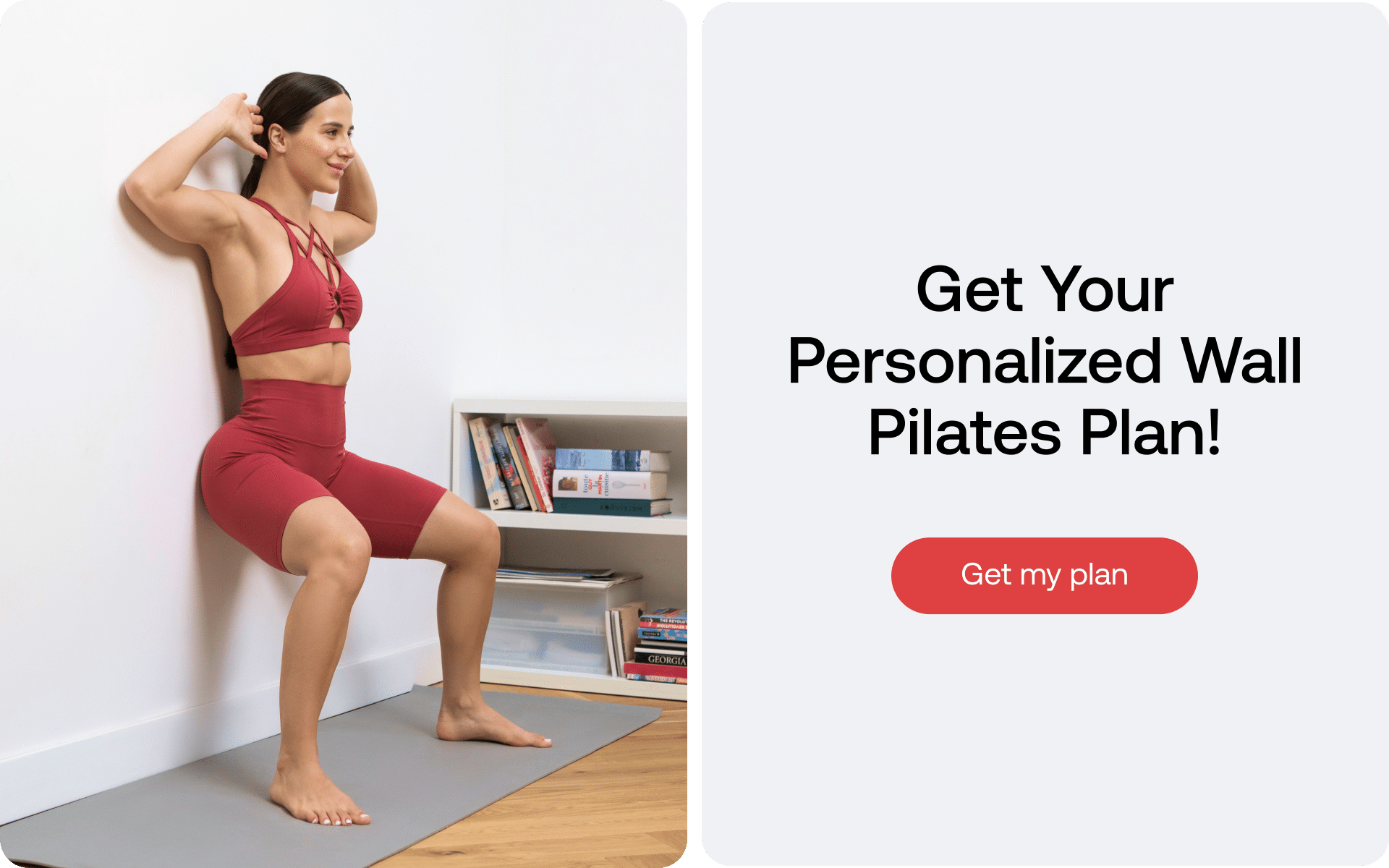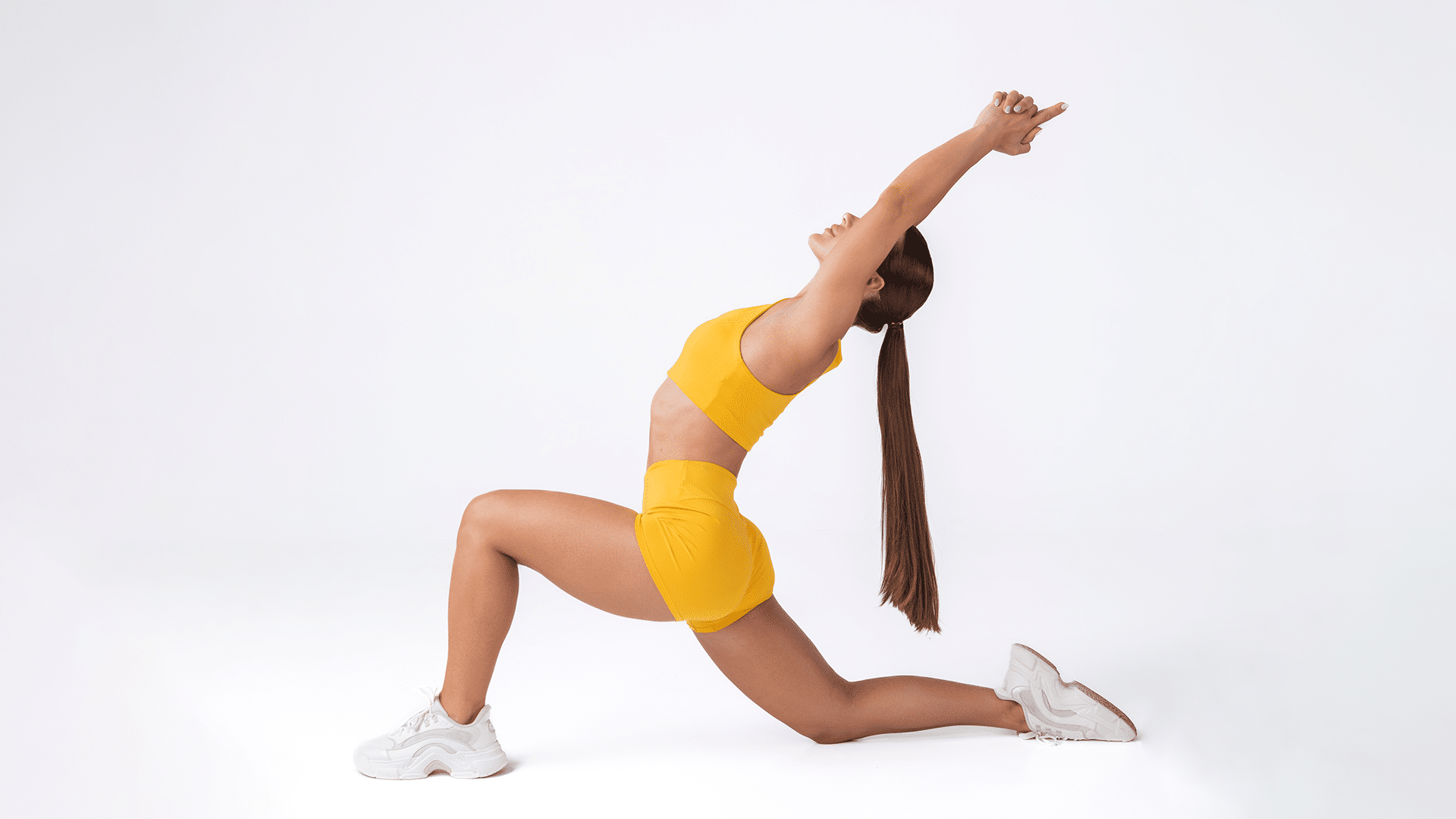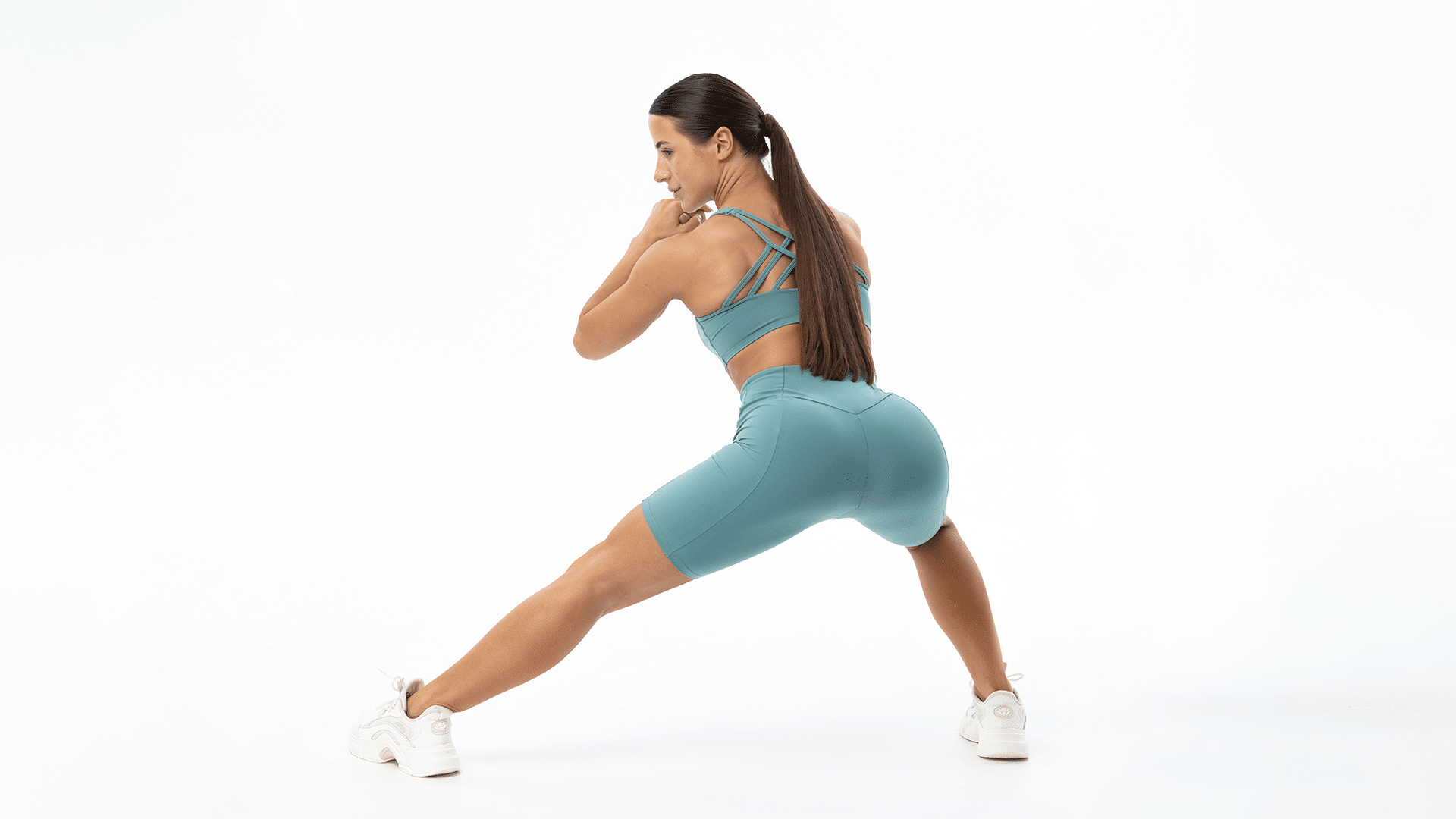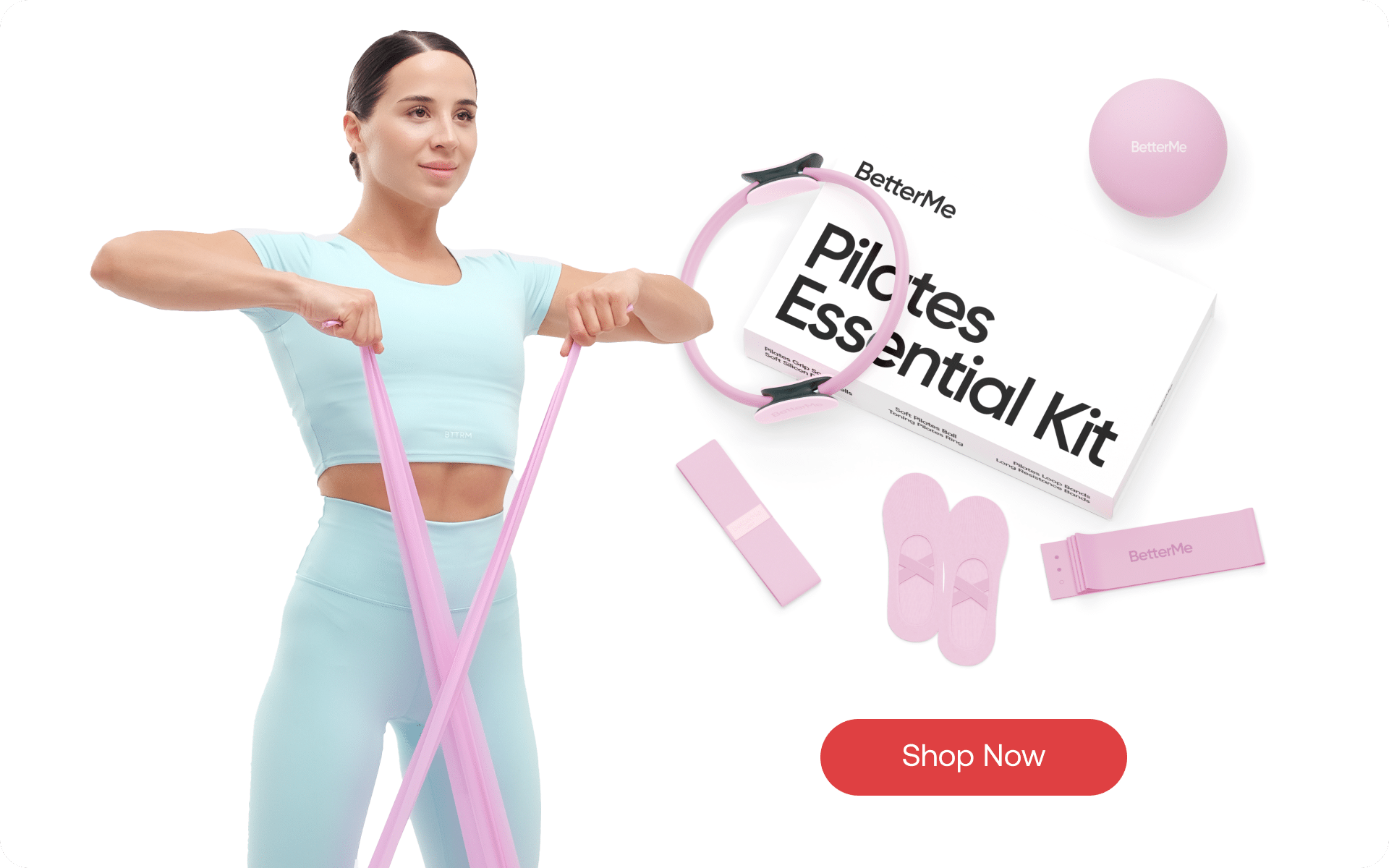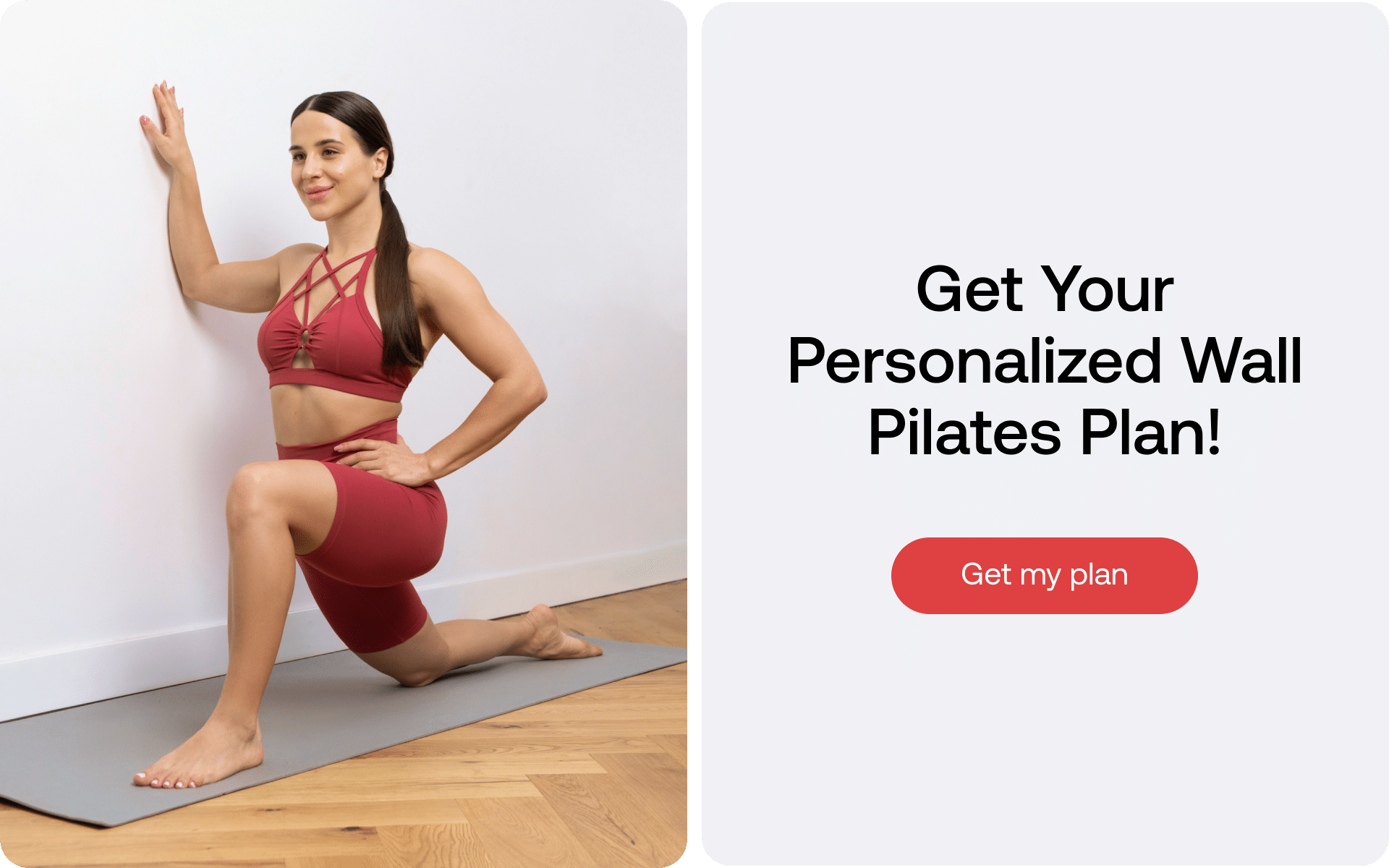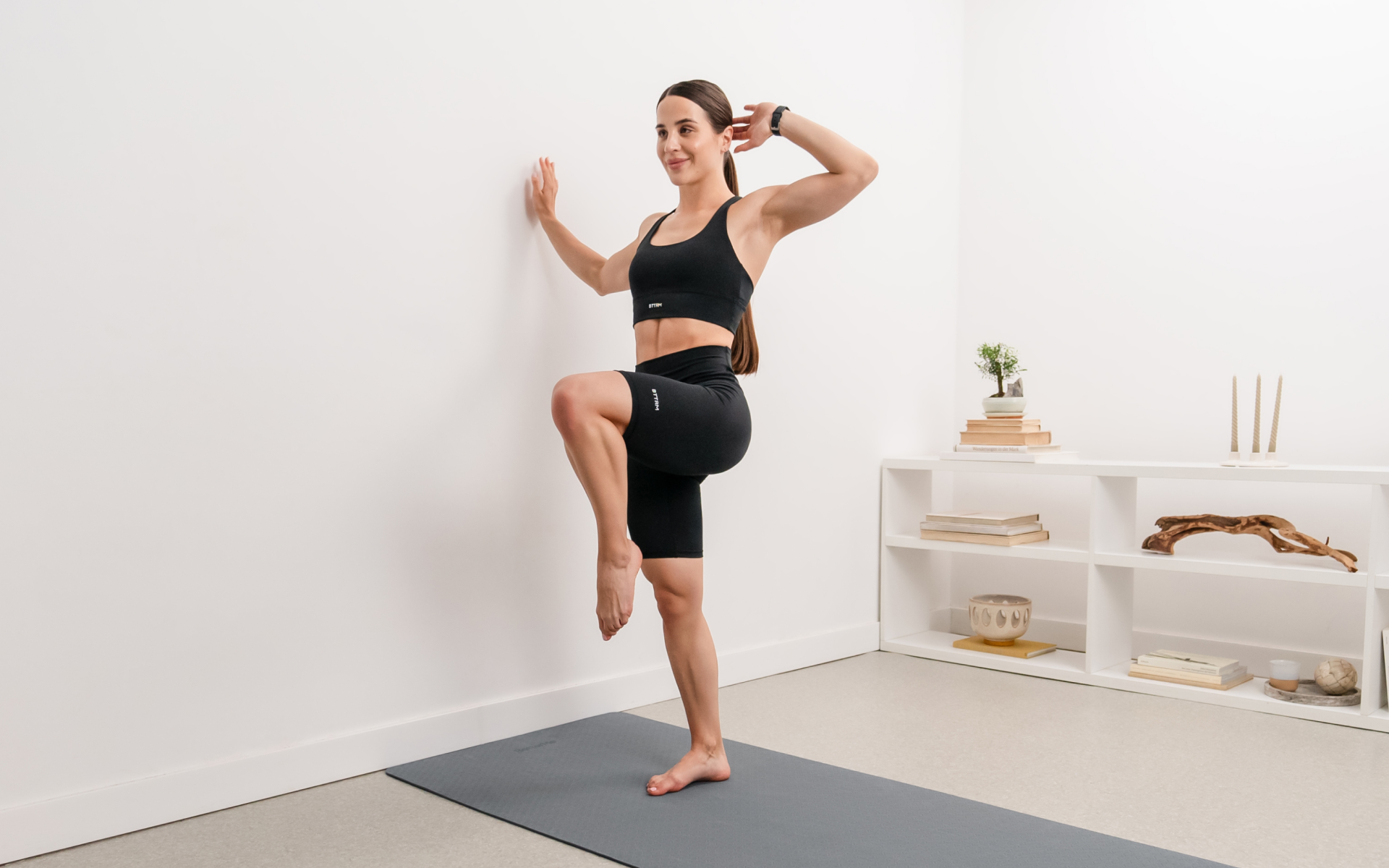When my trainer showed me the right posture and then asked me to do a 60-second wall sit, I knew I had been doing it wrong during my high-school gym classes. What I took as the easiest exercise was actually pretty tough on the quads! A wall sit is an impressive lower body exercise to build muscular endurance in the legs and engage the core. And the fact that it can be done anywhere makes it one of the most convenient workouts you can add to your routine. This exercise has many variations, making people curious about incorporating it into their workout. If you have been wondering the same, this article is the right place to start. Below, I have rounded up everything you need to know about wall sit – muscles worked, tips, and techniques. Have a look!
How To Do A Wall Sit?
Anyone can do a wall sit anywhere. All one needs is a wall and knowledge of the right posture. Here is how to do it correctly:
- Place your back against the wall, keeping your feet shoulder-width apart and two feet away from the wall.
- Engage your abdominal muscles and slide your back down the wall. Do this until your thighs are parallel to the ground.
- Adjust your feet so the knees are placed above the ankles, not the toes.
- Ensure your back is flat against the wall.
- Stay in this position for 20 – 60 seconds.
- Slide upwards on the wall until you are back in the standing position.
- Take a rest for 30 seconds and do this exercise 3 times.
Follow these tips if you are a beginner:
Don’t Sink To 90 Degrees On Your First Attempt
Instead of starting with 90 degrees right away, try to stop the hips above the knees so it is easy to exit the wall sit position. Gradually try to go lower until you can easily go to and return from the 90-degree position.
Start With Short Periods
Start by performing wall sits twice or thrice weekly to improve your endurance and strength. Add about five to ten seconds to your wall sit time until you can stay in the position for a minute.
What Muscles Are Worked In A Wall Sit?
There has been high regard in fitness circles for the wall sit muscles worked because of their lasting impact on physical performance. It is often used for building leg strength among players of running, ice hockey, downhill skiing, and other sports.
The wall sit is an exercise where you sit against a wall and hold the position without moving. It is a compound exercise because it works many muscles and joints simultaneously, such as glutes, hamstrings, and quads (1). The goal of a wall sit isn’t to make your muscles bigger but to build your ability to hold the position for longer periods. The wall sit differs from other leg exercises because it uses all your major leg muscles.
Improved muscular strength in squats later is rewarded with less fatigue when doing activities requiring extended use of quads. And although sports-specific training is most helpful when preparing for an upcoming season, you will notice a difference in your stamina as you add wall sits to other activities like climbing stairs and walking.
If you can hold a wall sit for a longer time it means your muscles have better endurance. Having good endurance is important not just for sports but also for everyday activities. With better endurance, you’ll find it easier to walk or carry heavy things for longer periods without getting tired.
Read More: Master The Wall Squat Exercise In 6 Easy Steps: A Beginner’s Guide
Does Wall Sits Build Muscle?
The answer to this question is yes. Our lower body has the major muscles used in a wall sit. When you do a wall sit, your quadriceps, hamstrings, calves, and glutes must work very hard.
Check out details of the main wall sit muscle groups:
Quadriceps
Wall sits are an exercise that works the quadriceps in the front of your thighs. Your four quadriceps muscles help you straighten your knee, and one of these muscles, the rectus femoris, helps you bring your thigh and torso closer together (2). Strong quadriceps are important for everyday activities like walking and getting up from a chair.
Glutes
The glutes, the muscles in your buttocks, help you to extend your hips and turn your legs outward. They also support your body weight and help you stand straight with good posture (3). Your glutes always work to keep you upright and in the right position.
Adductors
You can add a new muscle group to your wall sit exercise by slightly varying it. This targets your adductors, which are the muscles on the inner side of your thigh. You can put a medium-sized ball between your knees and squeeze it while you do the wall sit to work these muscles.
Squeezing the ball will help strengthen your adductors, which are important for moving your legs when you get in and out of a car, playing sports like soccer, basketball, swimming the breaststroke, and horseback riding. The adductors bring your thigh toward the middle of your body when they contract.
BetterMe app will kick you out of the mental funk, shake off your extra weight, rid you off your energy-zapping habits, and help you sculpt the body of your dreams. Intrigued? Hurry up and change your life for the better!
What Part Of The Body Does Wall Sit Work? – The Variations
This fun-to-do exercise has proven its benefits time and again. Although our lower body has the most muscles worked during a wall sit, you can target other parts by varying this exercise. The following are muscles used in the wall sit variations:
Uni Wall Squat
To do this exercise:
- Stand on one foot and hold dumbbells (if you want) at your sides.
- Put a ball behind your lower back and ensure it touches the wall. Keep your core tight and your feet shoulder-width apart.
- Then, squat down and roll your back along the ball until you’re low.
- As you stand back up, push through your heel and exhale.
It should take you at least three seconds to get back to the starting position and remember to keep one foot raised the whole time. This exercise starts by using your arms and then challenges your balance while working your inner thighs.
Wall Squat Press
To do this exercise:
- Stand with your back against a wall and hold dumbbells at your sides.
- Slide your back down the wall while keeping your core strong and your feet shoulder-width apart.
- Keep your arms straight and your dumbbells at your sides as you bend your hips and knees into a squat position.
- Once you’re squatting, raise your dumbbells to the sides until they’re at shoulder height.
- You can keep your arms straight or slightly bend your elbows. Hold the squat for the entire set of reps, which is 5-10 for beginners or 10-15 for others.
The correct way to do this exercise is to keep your arms high and your booty low.
Wall Squat Lat Raise
Here is what you should do to perform this wall sit variation:
- Start by standing with your back against a wall and holding dumbbells at your sides.
- Keep your feet shoulder-width apart and slide your back down the wall while engaging your core to come into a squat position.
- Keep the dumbbells at your sides with your arms straight.
- Raise the dumbbells to the sides until they’re at shoulder height, bending your elbows as needed.
- Hold the squat for the entire set of reps, which is 5-10 for beginners or 10-15 for others.
- To come back up, release your quads and push through your heels. Slide your arms slowly down by your sides.
We use weights to work out back and shoulder muscles in this exercise. It requires making right angles in various positions throughout the movement.
A few other wall sit variations will help you direct focus toward different muscle groups. The key is to know that there is a wall-way to this exercise. You can make slight changes, bring some fancy equipment, and make it work in your favor.
Read More: If I Were You, I’d Use This Wall Pilates Program To Activate My Body’s Natural Movement Patterns
Is Wall Sit Muscle Endurance?
The wall sit exercise focuses on working the muscles in the front of your upper thighs, called the quadriceps. Your lower leg muscles and core also get some exercise. But quads are the primary wall sit muscles worked when performed correctly.
Once you’ve mastered the regular wall sit, you can take it up by trying a single-leg wall sit. This variation will test your balance and engage more muscles. To do it, start with a regular wall sit, lift one leg off the ground, and hold it in front of you for a few seconds. Lower that leg and repeat with the other leg. Keep your thighs parallel to the ground and your knees directly over your ankles.
How Many Wall Sits Should I Do?
The number of wall sits you do depends on your health and fitness goals. If you are a beginner, you may want to start with three sets of 10-15 seconds and gradually increase the time and sets as you become more comfortable with the exercise.
If you are more experienced, you may want to do 3-4 sets of 30-60 seconds. It Is important to listen to your body and not overdo it. As with any exercise, it’s best to consult a fitness professional with any questions or concerns about your routine.
Lean and toned up body isn’t just a far-fetched fantasy. Check out the BetterMe app and watch it propel your weight loss journey into high gear!
The Bottom Line
Wall sits are a great exercise that can help improve your strength, joint stability, and flexibility without putting too much pressure on your joints. Our lower body has the most wall sit muscles worked and plays an integral role in our overall physical performance.
Wall sits can improve your physical performance in activities like sports and workouts, and they can also benefit your everyday life with just a few minutes of practice each day. If you want to reap the rewards of this amazing isometric exercise, all it takes is a little determination and consistency.
Now that you know all about wall sit exercise – muscles worked, variations, and tips, will you give it a shot? Let us know how you plan to begin!
DISCLAIMER:
This article is intended for general informational purposes only and does not serve to address individual circumstances. It is not a substitute for professional advice or help and should not be relied on for making any kind of decision-making. Any action taken as a direct or indirect result of the information in this article is entirely at your own risk and is your sole responsibility.
BetterMe, its content staff, and its medical advisors accept no responsibility for inaccuracies, errors, misstatements, inconsistencies, or omissions and specifically disclaim any liability, loss or risk, personal, professional or otherwise, which may be incurred as a consequence, directly or indirectly, of the use and/or application of any content.
You should always seek the advice of your physician or other qualified health provider with any questions you may have regarding a medical condition or your specific situation. Never disregard professional medical advice or delay seeking it because of BetterMe content. If you suspect or think you may have a medical emergency, call your doctor.
SOURCES:
- How to Add Compound Exercises to Your Workout Routine (2019, healthline.com)
- What to Know About Your Quadriceps Muscles (2020, healthline.com)
- Gluteus Maximus (n.d., physio-pedia.com)
